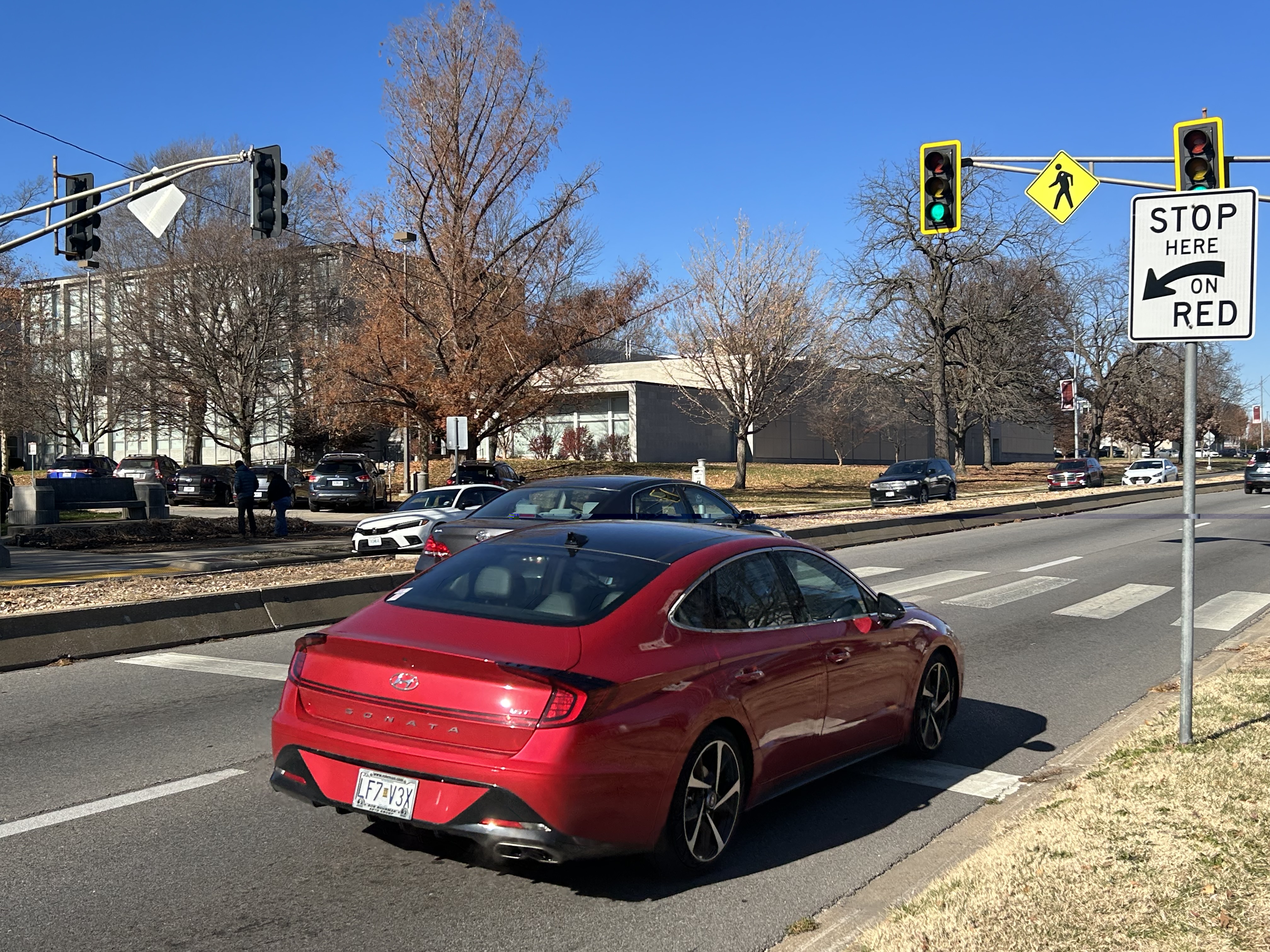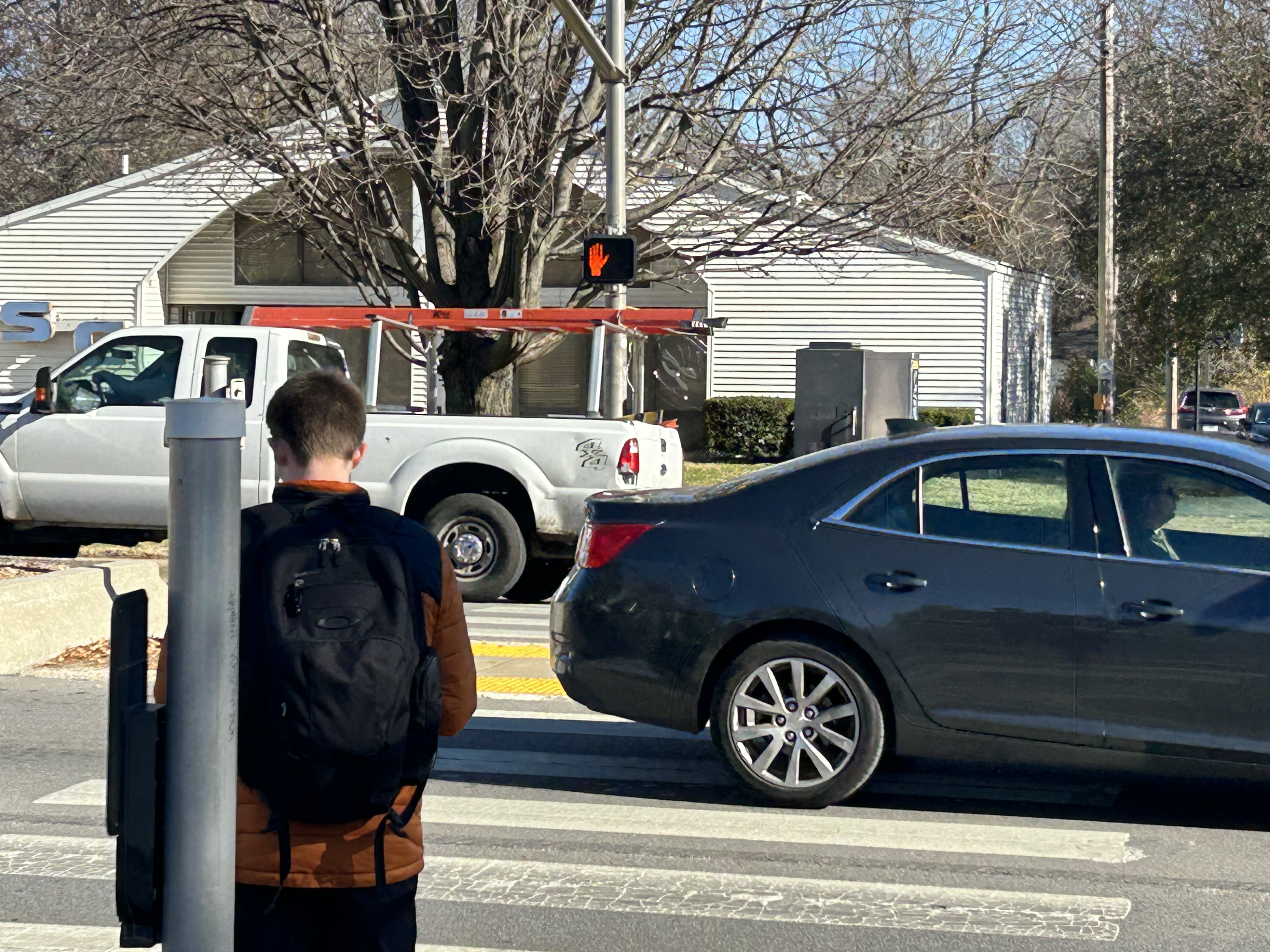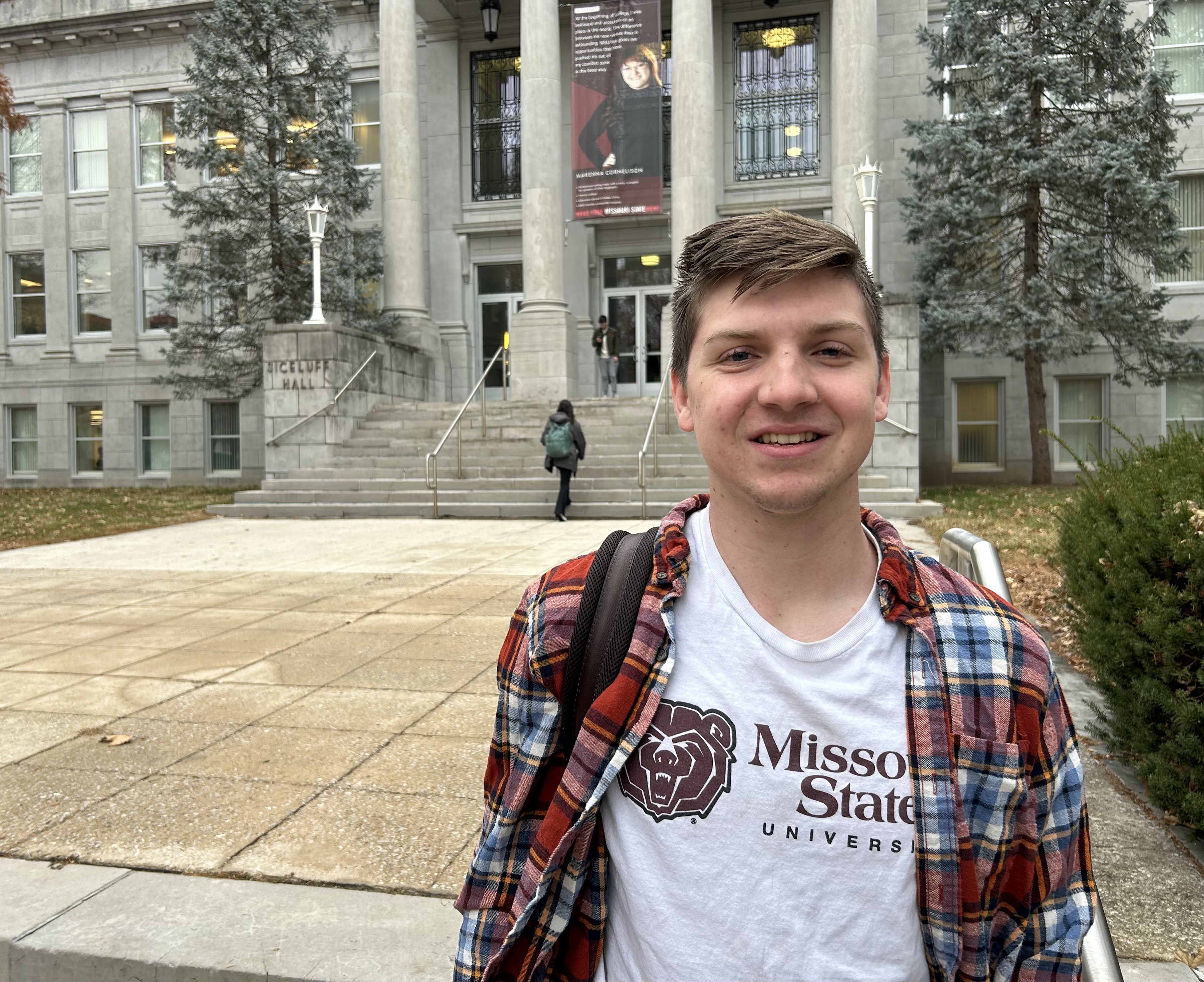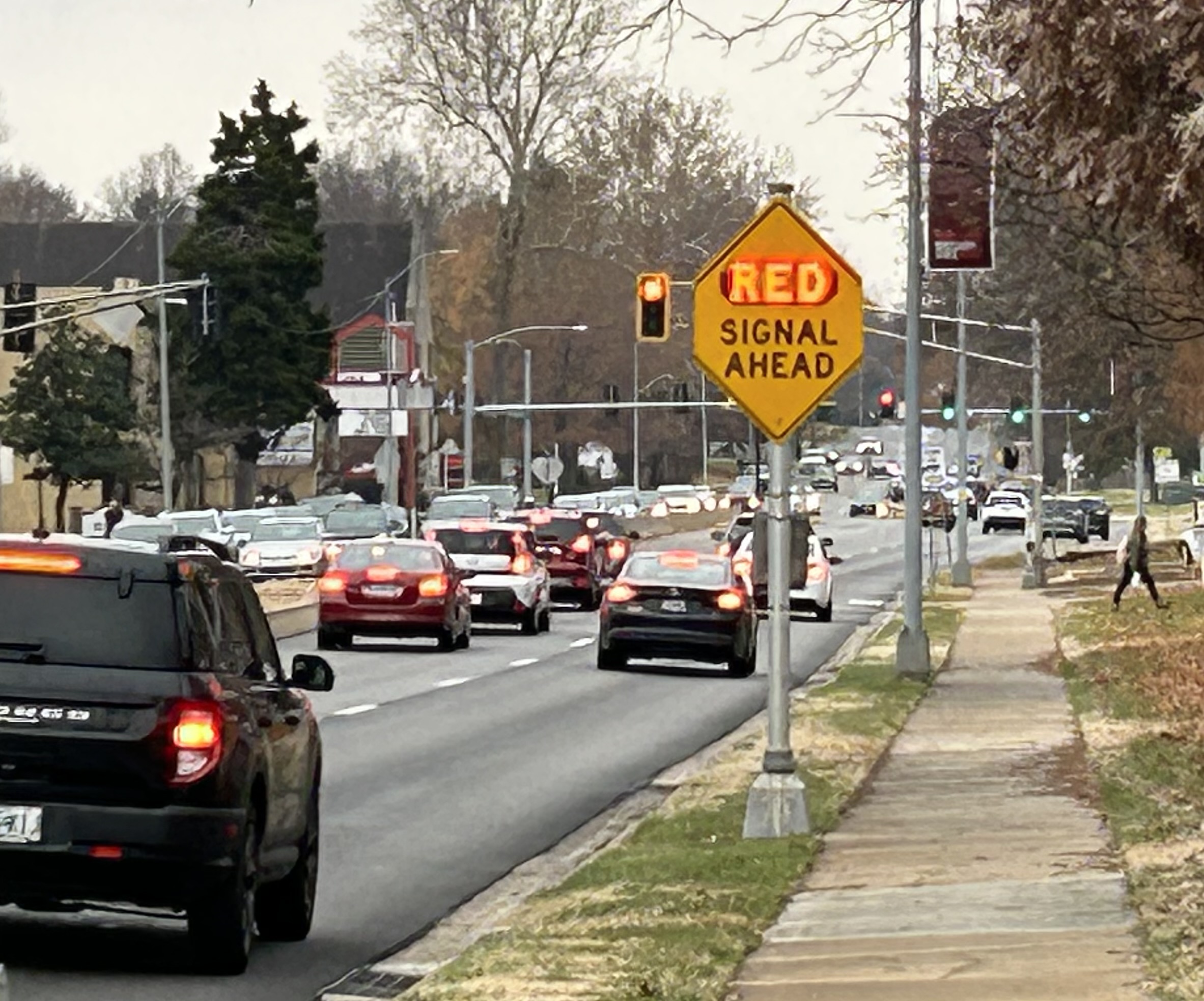Answer Man: I'm concerned that the timing of the pedestrian crossing light on National Avenue at Missouri State University is so out of sync that it is dangerous for pedestrians. The light was installed years ago after a student was struck and killed while crossing National. The problem is that after the crossing button is pressed it takes too long for the north/south traffic light to go red and the pedestrian “Walk” light to go green.
As a result, students are crossing on a no-crossing signal while traffic has a green. Also, the signal takes so long to activate that students cross against the red and, a minute or so later — after the pedestrian has departed — traffic is stopped for no apparent reason.
— David Hutchison, of Springfield
The crosswalk/traffic light David is talking about is approximately 180 yards north of the traffic lights at National Avenue and Grand Street.

For a reference point, the Lutheran Student Center is on the east side of National near this crosswalk. The speed limit here is 30 mph. There is no east-west street.
David is correct in that the traffic light was placed at the crosswalk after Barbara L. Emerson, a 21-year-old sophomore at what was then Southwest Missouri State University, was struck by a motorist and killed while in the crosswalk.
This was on June 12, 1989. She was an accounting major from Adrian, Missouri.
Emerson was walking east across National and a pickup in the lane closest to the median had stopped to let her pass. Emerson was hit as she stepped into the other northbound lane.
She died that night at what was then St. John's Regional Health Center (now Mercy). A 20-year-old driver was charged with careless and imprudent driving. Alcohol was not involved.
Students pressed button, waited short while, crossed on red
At 1 p.m. Monday (Nov. 27) I sat on a concrete bench at the crosswalk and observed students and traffic and used my watch to clock the cycle of the lights.
My observations were the same as what David relayed to me.

I watched a dozen or so people — presumably students — press the pedestrian button, wait a few seconds and — when there was an opening in traffic — cross National when they weren't supposed to cross.
Sometimes they stopped halfway, on the median, and waited for the traffic coming from the other direction to clear.
I timed how long the delay was from when the pedestrian pushed the button to when the signal changed; it ranged from 45 seconds to 70 seconds.
I also saw the traffic light for vehicles turn red — to allow the pedestrian to cross — long after the pedestrian had already crossed.
I'm sure more than a few drivers have wondered: Why did I have to stop?
On Tuesday I talked about the MSU crosswalk/traffic light with Jason Saliba, a signal operations engineer with the city of Springfield.
It took a persistent effort for me to figure out what Saliba was explaining to me. The topic is complicated.
Here's the good news. After our conversation on Tuesday, Saliba changed the control parameters the next day to make it more likely that a pedestrian pushing the button will more quickly get a green at the MSU crosswalk.
It's based on traffic flow and light cycles
The reason the wait time varies for pedestrians pressing the button has nothing to do with there being an apparatus on the traffic lights that monitors approaching traffic in real time. And it has nothing to do with pedestrian flow at the crosswalk.
Instead, every single traffic signal on National Avenue — from Chestnut Expressway to the James River Freeway — is on the same timing cycle.
The reason for this is to improve traffic flow so that, in theory, if you catch one green on National you are likely to catch the next.
My colleague Jackie Rehwald claims to have experienced this Magic Ride — all greens on National from Chestnut Expressway to James River Freeway.
A traffic light “cycle” is the amount of time between one green light at a traffic signal and the next green light at the same signal.
The cycles for all the lights along National Avenue are the same, but the cycle time changes (for all of them) during the day based on traffic patterns, Saliba explained.
In general, the busier the traffic during the day, the longer the cycle of the light.
During a 24-hour day, traffic engineers set the cycle so it ranges from 90 seconds to 150 seconds.
Even with perfect timing, pedestrian will never get an immediate green-to-go
Here's the best way I can explain why the response time to the pedestrian button at MSU can vary from one pedestrian to the next.
Example No. 1:
The cycle is set for 150 seconds.
The pedestrian arrives and pushes the signal button not knowing they have arrived 120 seconds into the light's cycle.
The pedestrian has to wait another 30 seconds for the “Walk” signal.
Example No. 2:
The cycle again is set for 150 seconds.
The next pedestrian arrives and pushes the pedestrian button, not knowing they have arrived 30 seconds into the 150-second cycle.
This pedestrian has to wait 120 seconds — two full minutes.
People who give up on the button
If no one pushes the crossing button, the light for traffic stays green.
It occurs to me that there likely are students who no longer press the button because they have come to assume it doesn't work; they've never waited around long enough to see that it does, in fact, work.

Student Corey Hambrick, an 18-year-old freshman, tells me he traverses the crosswalk often. Most of the time, he does not heed the automated voice command to “Wait!”
“I am just an impatient college student,” he tells me.
No one gets an instant OK to cross National
I should note that even a pedestrian with perfect timing will never be lucky enough to push the button and — presto! — immediately get a green.

That's because the traffic light at the MSU crosswalk has “red-ahead” warning lights north and south of the crosswalk. Because of that, the closest a pedestrian can get to perfect timing is a 10-second delay.
This 10-second minimum is an attempt to avoid a situation where a driver passes the red-ahead warning lights and they are not flashing, meaning the driver thinks it's OK to proceed, only to have a pedestrian push the crossing button and then assume no traffic is coming.
To be precise: in addition to the 10-second minimum, before the pedestrian “Walk” sign goes green, the vehicular traffic first gets a yellow light for 3.8 seconds and a then a red light for 1.4 seconds. Only then is “Walk” activated.
Based on traffic flow, not pedestrian flow
As I said earlier, the cycle of traffic lights is based on traffic flow, not pedestrian flow.
The pedestrian flow — how many pedestrians, for example, cross at the MSU light at 8 a.m. as opposed to 2 p.m. — is not a factor in setting the cycle of lights on National, Saliba says.
The truth of the matter is that far more people in vehicles drive by on National than there are pedestrians who activate the crossing signal.
I asked Saliba for stats from Monday. The pedestrian button was activated 300 times; 32,000 vehicles drove by (northbound and southbound).
Is a faster response needed when pedestrians push button?
I asked Saliba this: Wouldn't it be safer for pedestrians at the MSU crosswalk if the green-to-go light consistently came on, say, 20 seconds after pressing the button?
No, he tells me, it would not be safer.
In fact, he adds, it would be more dangerous.
Why?
Because in thick traffic there would be waves of vehicles arriving at the crosswalk light at the same time, increasing the likelihood of a pedestrian being hit, Saliba says.
I asked him to explain how a traffic engineer would know when traffic is expected to arrive in a heavy wave at a traffic light, specifically the one at the MSU crossing.
His answer made sense. He gave the example of northbound traffic stopped at the light at Grand and National, 180 yards to the south of the crosswalk.
When the light at Grand turns green for the vehicles continuing north on National, you can know almost to the second when that traffic, in a cluster, will reach the MSU crosswalk.
‘Safer for pedestrians to cross the street, not necessarily faster‘
“We absolutely understand the frustration of a pedestrian waiting so long to cross National at this signalized crosswalk,” Saliba says, via email.
“However, the crosswalk was signalized to make it safer for pedestrians to cross the street, not necessarily faster. Pedestrians oftentimes grow impatient here and cross against the ‘Don’t Walk' indication. We encourage pedestrians to obey the signal indications and wait until it is safe to cross.”
It seems unlikely to me that student pedestrians will ever wait 60 to 70 seconds to cross. I would suspect that when they first spy an opening in traffic, they cross.
In my estimation, the situation is this:
- Pedestrians are supposed to have the right-of-way in the first place when crossing in a crosswalk.
- Because that didn't work in 1989, leading to a tragic death, the traffic light was put in place.
- The majority of pedestrians today ignore the “Wait!” signal — put in place to protect them — primarily because it's too long of a wait.
- Ironically, putting in traffic lights changed the standard for right-of-way. I confirmed this with Saliba, who wrote, “Pedestrians always have the right of way in an un-signalized crosswalk. Because the pedestrians are crossing against a signal indication, it is illegal.”
I might add this: Vehicles should yield to pedestrians crossing even without a signal.
In conclusion, somehow it all seems to be working. As far as I know, there has not been a fatal pedestrian accident in the crosswalk on National Avenue in 34 years.
This is Answer Man column No. 61.

